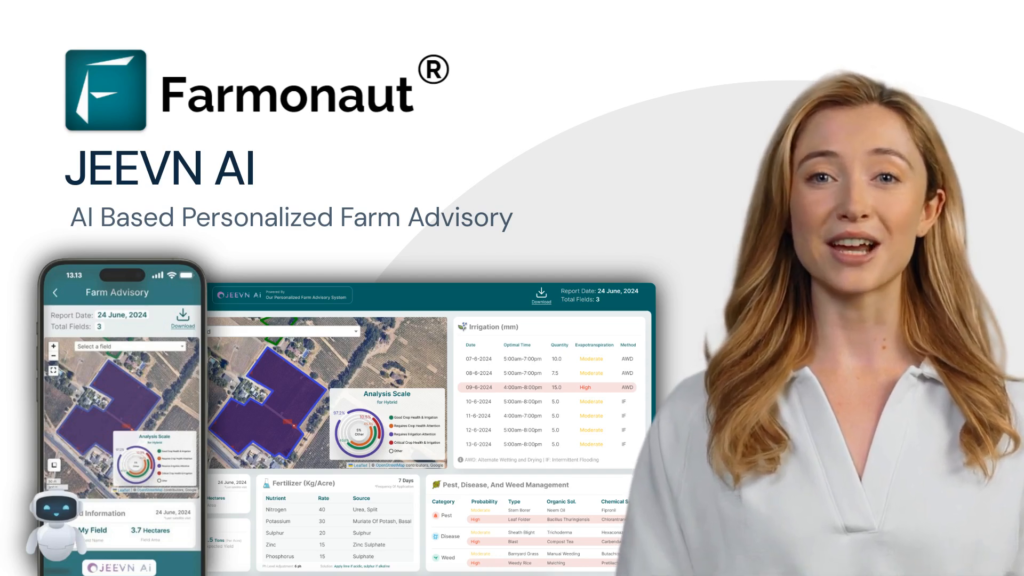Utah’s Agricultural Landscape Evolves: Key Leadership Changes and Policy Shifts in 2025
“Utah’s agriculture commissioner retires after 4 years, impacting policies for 16,000+ farms and ranches statewide.”
As we step into 2025, Utah’s agricultural sector is experiencing significant transitions that are set to reshape the industry’s future. At the heart of these changes is the retirement announcement of Craig Buttars, the Utah Department of Agriculture & Food Commissioner, marking the end of a transformative four-year tenure. This shift in leadership, coupled with other policy developments, signals a new era for Utah’s farmers, ranchers, and the entire agricultural community.
The Legacy of Commissioner Craig Buttars
Commissioner Buttars, hailing from Cache County, has been a pivotal figure in advancing Utah’s agricultural interests. His retirement, effective at the conclusion of the 2025 Utah State Legislature, closes a chapter of significant progress in the state’s agricultural policies. During his tenure, Buttars championed several key initiatives:
- Sustainable Farming Practices: Buttars was instrumental in promoting water-wise agricultural practices, balancing crop needs with sustainable resource management.
- Medical Cannabis Program Expansion: Under his leadership, Utah saw a substantial growth in its medical cannabis program, opening new avenues for farmers.
- Local Food Processing Initiative: Buttars initiated a state-run program to boost local food processing, a critical step in supporting local farmers and invigorating the state’s agricultural economy.
In his retirement statement, Buttars expressed deep gratitude for his time in office, noting that his appreciation for agriculture and the agricultural community in Utah has only strengthened during his service. His hope is that his representation has positively impacted the lives of farmers and ranchers across the state.

Concurrent Changes in Environmental Leadership
The agricultural sector isn’t the only area experiencing leadership transitions. Kim Shelley, the executive director of the Utah Department of Environmental Quality (DEQ), has also announced her resignation, effective at the end of the month. This dual exit from Governor Cox’s cabinet marks a significant moment of change in Utah’s approach to both agriculture and environmental policy.
These leadership changes raise important questions about the future direction of policies affecting Utah’s farmers, ranchers, and environmental quality. As the state prepares for new leadership in both the Department of Agriculture & Food and the DEQ, stakeholders are closely watching how these transitions will impact key areas such as:
- Water conservation in agriculture
- Sustainable farming practices
- Environmental regulations affecting agricultural operations
- Support for local food systems
- Expansion of alternative crops like medical cannabis
Legislative Developments Shaping Utah’s Agricultural Landscape
Alongside these leadership changes, Utah’s political landscape is evolving with new legislative developments that could have far-reaching impacts on the agricultural sector:
- Public Employee Collective Bargaining: The Utah Senate recently passed a bill eliminating collective bargaining rights for public employees. While not directly related to agriculture, this change could affect agricultural extension services and public sector support for farmers.
- Daylight Saving Time Adjustments: Another bill advancing through the legislature aims to stabilize the annual adjustment for Daylight Saving Time. This could impact farming schedules and agricultural operations that are sensitive to daylight hours.
These legislative changes, combined with the leadership transitions, underscore the dynamic nature of Utah’s policy environment and its potential effects on the agricultural community.
The Role of Technology in Utah’s Agricultural Future
As Utah navigates these changes, the role of agricultural technology becomes increasingly important. Farmonaut, a leader in satellite-based crop monitoring, could play a crucial role in supporting Utah’s evolving agricultural needs during this period of transition.
Farmonaut’s advanced satellite imagery and AI-driven insights can help Utah farmers adapt to new policies and practices, particularly in areas such as:
- Water-wise agriculture: Optimizing irrigation through precise soil moisture monitoring
- Sustainable farming: Providing data-driven insights for resource management
- Crop diversification: Supporting farmers as they explore new crops, including medical cannabis
To learn more about how Farmonaut’s technology can benefit Utah’s farmers, check out our comprehensive services:
Utah’s Agricultural Policy Timeline (2021-2025)
| Year | Policy/Event | Description | Potential Impact |
|---|---|---|---|
| 2021 | Craig Buttars appointed as Utah Department of Agriculture & Food Commissioner | Buttars begins his tenure with a focus on sustainable farming and local food systems | Set direction for Utah’s agricultural policies for the next four years |
| 2022 | Launch of Water-Wise Agriculture Initiative | State-wide program to promote efficient water use in farming | Estimated 15% reduction in agricultural water consumption by 2025 |
| 2023 | Expansion of Medical Cannabis Program | Increased licenses for cannabis cultivation and processing | 20% growth in Utah’s medical cannabis industry |
| 2024 | Local Food Processing Initiative | State-run program to boost local food processing capabilities | 30% increase in local food processing capacity by 2026 |
| 2025 | Retirement of Commissioner Buttars and DEQ Director Shelley | Major leadership transition in agriculture and environmental sectors | Potential shift in policy direction and implementation strategies |
“Utah’s 2025 policy shifts affect 1.1 million acres of irrigated farmland, emphasizing water-wise agriculture practices.”
The Impact of Leadership Changes on Utah’s Agricultural Community
The departure of Commissioner Buttars and DEQ Director Shelley represents more than just a change in personnel; it signifies a potential shift in the direction and implementation of agricultural and environmental policies in Utah. Here’s how these changes might impact various stakeholders:
Farmers and Ranchers
- Potential changes in support programs and regulatory frameworks
- Possible shifts in priorities for sustainable farming practices
- Opportunities for new voices in shaping agricultural policies
Agricultural Businesses
- Potential changes in local food processing initiatives
- Possible shifts in focus for agricultural technology adoption
- New opportunities in emerging sectors like medical cannabis
Environmental Groups
- Potential changes in the balance between agricultural productivity and environmental conservation
- Opportunities to influence new leadership on sustainable practices
- Possible shifts in water management policies affecting agriculture
As Utah’s agricultural landscape evolves, the need for advanced farming technologies becomes more apparent. Farmonaut’s satellite-based crop monitoring and AI-driven insights can play a crucial role in helping farmers adapt to these changes. Our technology supports:
- Precise resource management for water-wise agriculture
- Data-driven decision making for sustainable farming
- Efficient monitoring of large agricultural areas
Explore how Farmonaut can help you navigate these changes: Farmonaut API
The Future of Utah’s Agricultural Policies
As we look towards the future of Utah’s agricultural sector, several key areas are likely to be at the forefront of policy discussions:
1. Water Conservation in Agriculture
With Utah’s arid climate and growing population, water conservation in agriculture will remain a critical issue. The next generation of leadership will need to build on the water-wise initiatives started under Commissioner Buttars, potentially exploring new technologies and practices to further reduce water usage while maintaining agricultural productivity.
2. Sustainable Farming Practices
The push towards more sustainable farming practices is likely to continue. This may include increased support for organic farming, soil health initiatives, and practices that reduce the environmental impact of agriculture while improving long-term productivity.
3. Local Food Systems
The emphasis on local food processing and distribution is expected to grow. New leadership may explore additional ways to strengthen Utah’s local food systems, potentially through expanded grant programs, infrastructure investments, or policy incentives.
4. Agricultural Technology Adoption
As farming becomes increasingly high-tech, policies supporting the adoption of agricultural technologies like precision farming, IoT sensors, and data analytics will be crucial. This is where solutions like Farmonaut can play a significant role in Utah’s agricultural future.
Learn more about Farmonaut’s advanced agricultural solutions: API Developer Docs
5. Climate Change Adaptation
With changing climate patterns affecting agriculture worldwide, Utah’s agricultural policies will need to address climate adaptation strategies. This could include research into drought-resistant crops, adjustments to planting schedules, and support for farmers dealing with increased weather variability.

The Role of Technology in Shaping Utah’s Agricultural Future
As Utah’s agricultural landscape evolves, the role of technology in farming becomes increasingly crucial. Farmonaut’s satellite-based crop monitoring and AI-driven insights are at the forefront of this technological revolution, offering solutions that align perfectly with Utah’s emerging agricultural needs:
1. Precision Agriculture for Water Conservation
Farmonaut’s satellite imagery and AI analytics provide farmers with precise data on soil moisture levels and crop health. This information enables more efficient irrigation practices, supporting Utah’s push towards water-wise agriculture. By optimizing water use, farmers can reduce costs and conserve this precious resource.
2. Data-Driven Sustainable Farming
Our platform offers real-time insights into crop health, pest pressures, and nutrient needs. This data empowers farmers to make informed decisions about fertilizer application and pest management, reducing the environmental impact of farming while maintaining high productivity.
3. Support for Crop Diversification
As Utah’s agricultural sector explores new crops, including the expansion of medical cannabis, Farmonaut’s technology can provide valuable insights into optimal growing conditions, helping farmers successfully diversify their operations.
4. Climate Change Adaptation
With access to historical and real-time data, farmers can better understand and adapt to changing climate patterns. Farmonaut’s predictive analytics can help in planning planting schedules and selecting appropriate crops for evolving conditions.
To see how Farmonaut can revolutionize your farming practices, check out our comprehensive tutorial:
Embracing Change: The Path Forward for Utah’s Agriculture
As Utah’s agricultural sector stands at this crossroads of leadership change and policy shifts, it’s clear that the industry is poised for transformation. The retirement of Commissioner Buttars and the concurrent changes in environmental leadership open up new possibilities for innovation and growth in the state’s farming practices.
We believe that by embracing these changes and leveraging cutting-edge technologies like those offered by Farmonaut, Utah’s agricultural community can not only adapt to new challenges but thrive in the face of them. From water conservation to sustainable farming practices, from local food systems to climate change adaptation, the tools and insights provided by advanced agricultural technologies will be instrumental in shaping a prosperous and sustainable future for Utah’s farms and ranches.
As we move forward, it’s crucial for all stakeholders – farmers, policymakers, environmental groups, and technology providers – to work together in crafting policies and adopting practices that balance productivity with sustainability. The coming years will be pivotal in determining the long-term health and success of Utah’s agricultural sector.
At Farmonaut, we’re committed to supporting this transition by providing state-of-the-art satellite monitoring and AI-driven insights. Our goal is to empower Utah’s farmers with the data and tools they need to make informed decisions, optimize their operations, and contribute to a sustainable agricultural future for the state.
To learn more about how Farmonaut can support your farming operations during this time of change, explore our time-lapse feature:
Farmonaut: Empowering Utah’s Agricultural Future
As Utah’s agricultural landscape evolves, Farmonaut stands ready to support farmers, ranchers, and agricultural businesses with our advanced satellite-based farm management solutions. Our platform is designed to address the unique challenges and opportunities facing Utah’s agricultural sector in 2025 and beyond.
Explore our subscription options to find the perfect fit for your farming needs:
Earn With Farmonaut
Earn 20% recurring commission with Farmonaut’s affiliate program by sharing your promo code and helping farmers save 10%. Onboard 10 Elite farmers monthly to earn a minimum of $148,000 annually—start now and grow your income!
Learn more about our affiliate program: Earn With Farmonaut
Frequently Asked Questions
1. How will the retirement of Commissioner Buttars affect Utah’s agricultural policies?
The retirement of Commissioner Buttars may lead to shifts in policy priorities and implementation strategies. While the foundational work in areas like water-wise agriculture and local food processing is likely to continue, new leadership may bring fresh perspectives and initiatives to address emerging challenges in Utah’s agricultural sector.
2. What impact will the changes in environmental leadership have on farmers and ranchers?
Changes in environmental leadership could lead to adjustments in regulations affecting agricultural operations, particularly in areas like water usage and land management. Farmers and ranchers may need to adapt to new guidelines or take advantage of new opportunities in sustainable farming practices.
3. How can Utah farmers prepare for potential policy changes in 2025?
Farmers can prepare by staying informed about policy discussions, engaging with agricultural associations, and exploring technologies like Farmonaut that can help them adapt to changing regulations and best practices. Diversifying crops and adopting sustainable farming methods can also increase resilience to policy shifts.
4. What role will technology play in Utah’s evolving agricultural landscape?
Technology will play a crucial role in helping farmers adapt to new policies and environmental challenges. Solutions like Farmonaut’s satellite-based crop monitoring can provide valuable insights for water management, sustainable farming practices, and efficient resource allocation.
5. How might the expansion of the medical cannabis program affect Utah’s agricultural sector?
The expansion of the medical cannabis program could create new opportunities for farmers to diversify their crops. It may also lead to increased investment in specialized agricultural technologies and practices specific to cannabis cultivation.
As Utah’s agricultural landscape continues to evolve, staying informed and adaptable will be key to success. Farmonaut is committed to supporting Utah’s farmers and ranchers through these transitions with our advanced agricultural technology solutions. Together, we can build a sustainable and prosperous future for Utah’s agriculture.
















